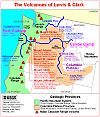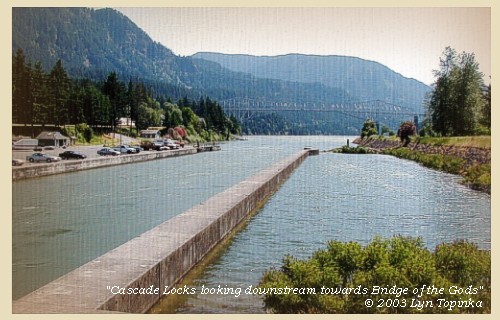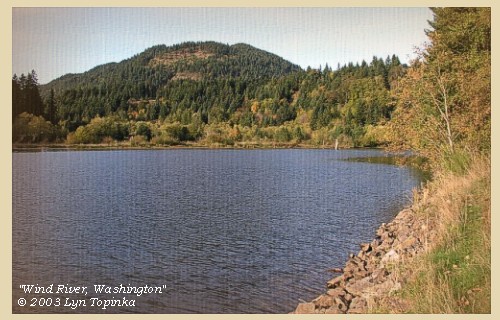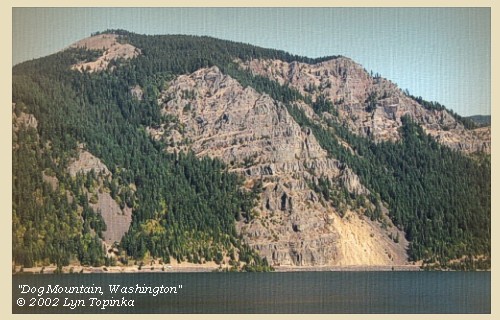The Volcanoes of
Lewis and Clark
Lewis and Clark
|
April 13, 1806 Columbia River Gorge - Cascade Locks to Dog Mountain |
|
Home
The Volcanoes of Lewis and Clark Map of the Journey Volcanoes, Basalt Plateaus, Major Rivers, etc. The Volcanoes Mount Adams, Mount Hood, Mount Jefferson, Mount Rainier, and Mount St. Helens CALENDAR of the Journey October 1805 to June 1806 Along the Journey Pacific Northwest Maps - Columbia River, Volcanoes, Flood Basalts, Missoula Floods, Geology, etc. The Corps of Discovery The Journey of Lewis and Clark About the Reference Materials The Journals, Biddle/Allen, DeVoto, Gass, Moulton, Topo Maps, and others USGS Lewis and Clark Links Links to USGS Websites highlighting the Lewis and Clark Journey Resources Publications Referenced and Websites Visited |
PREVIOUS
April 12 Columbia River Gorge, "Lower Falls of the Columbia", Cascade Locks |
April 13
Columbia River Gorge, Cascade Locks to Dog Mountain "Lower Falls of the Columbia" and Cascade Locks, Wind River, Dog Mountain Landslide |
CONTINUE
April 14 Columbia River Gorge, Dog Mountain to Major Creek |
|
Heading for Home - April 1806
Columbia River Gorge - Cascade Locks to Dog Mountain |
| Lewis and Clark's camp of April 12, 1806, was on the Washington side of the Columbia River, above the Cascade Locks. |
| Sunday, April 13, 1806 |
| The loss of our periogue yesterday obliges us to distribute our leading between the two canoes, and the two remaining periogues. This being done, we proceeded along the north side of the river [Washington State], but soon finding that the increased loading rendered our vessels difficult to manage, if not dangerous in case of high wind, the two periogues only continued on their route, while captain Lewis with the canoes crossed over to the Yehhuh village [in the area of Cascade Locks], with a view of purchasing one or two more canoes. ...... |
| He [Captain Lewis] proceeded along the south side of the river [Oregon], and joined us in the evening. We had gone along the north shore as high as Cruzatte's river [Wind River], to which place we had sent some hunters the day before yesterday, and where we were detained by the high winds. |
| The hunters however did not join us, and we therefore, as soon as the wind had abated, proceeded on for six miles, where we halted for captain Lewis, and in the meantime went out to hunt. [vicinity of Dog Mountain] ...... |
|
|
|
The Camp - April 13, 1806:
Lewis and Clark camped on the Washington side of the Columbia, near Dog Mountain, between Collins Creek and Dog Creek. |
| Home | Previous | Continue |
If you have questions or comments please contact: GS-CVO-WEB@usgs.gov
June/July 2004, Lyn Topinka
The Volcanoes of Lewis and Clark Home Page | CVO Home Page























